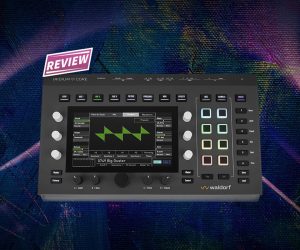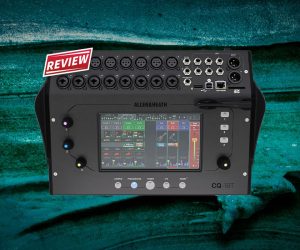
How to: Bang-on Retro Drums Part 2
Tired of drums sounding big, wide and boring. Turn back the clock with us as we re-create drum sounds from the ’50s, ’60s and ’70s.
Early ’60s Initial Days of Multitrack
Tutorial: Michael Carpenter
The ’60s ushered in some pretty significant changes. Though Les Paul and others experimented with sound-on-sound recording in the early ’50s (essentially, playing one mono tape into a mixer, and recording another part at the same time to another mono machine), true overdubbing facilities only started to appear on three-track machines in the very late ’50s. The initial benefit was that orchestras could be overdubbed. Tracking sessions soon involved having the ensemble balanced onto one track while the singer, also performing live, was recorded to a second track. The orchestra would then be overdubbed onto the third track — a massive change at the time. As the first four-track machines started to hit in the early ’60s, this practice remained intact. Ensembles, including singers, still performed live in one space, and occasionally the additional tracks were used for ‘sweetening’ — adding horns, strings or backing vocals. The pre-’60s practice of self-balancing remained.
The first major change ushered in by the rock ’n’ roll era was that singers could monitor themselves through ‘monitor speakers’ to compete with the louder guitar amps that had also popped up. Drummers started to play harder and used more cymbals to mirror the live experience, prompting engineers to begin looking at new ways to convey this live experience to tape. Basically, everyone got louder.
This manifested in some small but important changes. Large diaphragm condenser mics were replaced as the main ‘drum kit’ mic with either a ribbon mic to tame the cymbals, or a dynamic mic to protect the more fragile/expensive mics from flailing drum sticks. A kick drum mic became compulsory too. Though in this early stage the front head was still on the drum, and engineers, concerned with the amount of air pumped out of this bigger drum, placed the mic no closer than a metre from the head.
In the control room, things changed as well. The valve consoles had to be upgraded to handle the four-track recorder functionality. In many situations, a compressor was placed between the bussed output of the console and the tape machine, to protect the tape from overloading. It meant the live tracks were submixed down to one channel, sent through a compressor and then to one track of the tape, embedding those sounds and balance into the mix forever. So a lot of time was taken to get the balances and interaction between the elements and the compressor right before they hit tape.


EARLY ’60s INITIAL DAYS OF MULTITRACK
Key listening tracks:
My Generation – The Who
Uptight – Stevie Wonder
I Want To Hold Your Hand – The Beatles
Mr Tambourine Man – The Byrds
Heatwave – Martha and The Vandelles
















RESPONSES